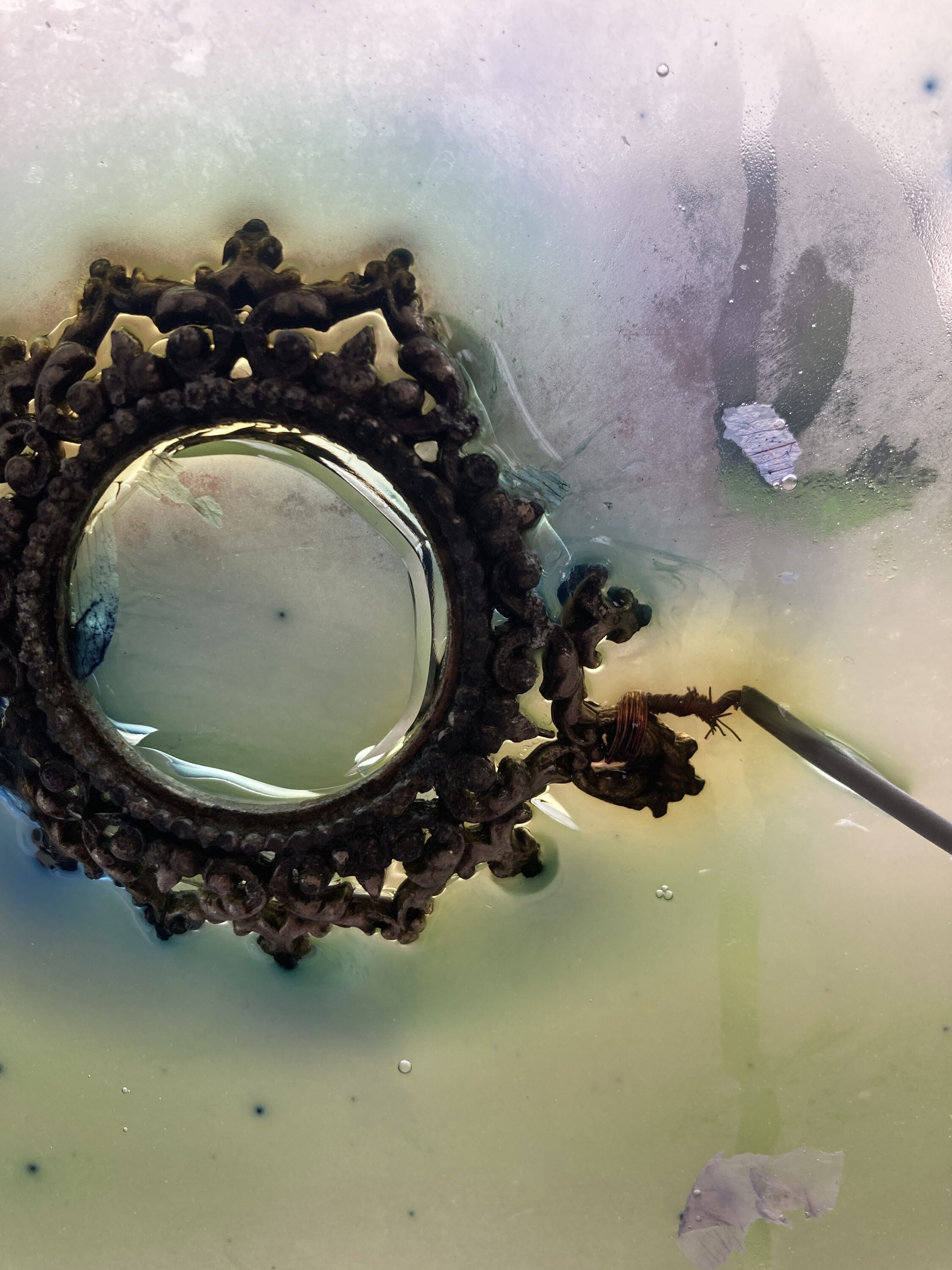Mio Fujimaki
En résidence de juillet à septembre 2024
Une vitrine du temps qui passe
On pourrait décrire l’activité de Mio Fujimaki avec la froideur des processus expérimentaux, car au fond c’est bien de cela qu’il s’agit … mais aussi de tout autre chose, car ces expériences ne visent d’autre résultat que leur déroulement même, et tout ce qui pourra s’y manifester. On passe à deux doigts de la science, et la jeune artiste reconnaît son admiration sans borne pour celle-ci. Mais, admettant dans un sourire son incompétence en la matière, Fujimaki développe sa propre méthode d’exploration du réel, entre fiction et réalité, poème et thèse académique, dans un domaine que seul l’art, dans sa liberté sans limite, peut embrasser. « Quand je serai grande, je serai alchimiste », proclame son site Instagram, et l’on voit ce que sa pratique minutieuse doit à cette approche du monde doublement abouchée au macrocosme et au microcosme, à la nature et à l’appris.
« L’incroyable, c’est ce qu’on ne voit pas. Le cinéma, c’est ça : c’est l’incroyable ». Assis dans une chambre d’hôtel devant une télévision où s’agitent deux tennisman, Jean-Luc Godard, répondant à un questionnaire de Wim Wenders1, zézaie avec hésitation cette définition aérienne dont le paradoxe convient si bien aux arts plastiques.
Et l’œuvre si subtile de Mio Fujimaki, de quoi est faite son invisibilité ? En tout cas pas de cette sorte de perfection conceptuelle, de cette glorieuse immatérialité dont se targuaient certains avant-gardistes des années 1970. Au contraire : formée à la fois à l’art textile et à l’orfèvrerie, Fujimaki a conservé de la pratique artisanale le goût du rapport direct à la matière. Tout comme Gaston Bachelard plaçait la « rêverie matérielle » au centre de sa philosophie, Fujimaki fait de la matière le cœur de sa connaissance du monde : « Ce qui m’intéresse, écrit-elle, c’est la compréhension physique à travers la matière. Pour moi, la matière est le concept ; dans la matière, je trouve la poésie »
Elle procède à partir d’un petit nombre de matériaux simples et d’objets modestes : rien, donc, du chamanisme spectaculaire de Beuys. Il y a le verre et ses transparences dont Fujimaki joue et qu’elle déjoue. Le papier photographique, qui ici ne révélera d’autre image que celle de l’oxydation, car avant de servir à révéler l’image du monde, il est une surface métallique. Les gélatines, enfin, mers nourricières baignant et connectant des objets de métal, dans leur double nature de matériaux conducteurs et d’objets chargés d’histoires.
Autour et à travers ceux-ci s’activent des forces – et en particulier le courant électrique, métaphore d’autres formes de circulation entre les formes du vivant -, lesquelles à leur tour mettent en œuvre des processus visibles sous la forme de corrosions, d’oxydations, de brisures, … Il s’agit donc de jouer à la lisière, voire à rebours : provoquer l’erreur, susciter la destruction lente par la coprésence des métaux ou leur simple exposition aux intempéries, faire advenir la cassure, dont la perfection suscite chez Fujimaki tant d’admiration réjouie qu’elle tente d’en fixer les lignes en moulant dans le métal tous les morceaux d’un miroir brisé.
De tout ceci, l’artiste, collecte les traces, qu’elle réunit parfois dans des livrets infiniment précieux, comme pour en honorer l’aveugle beauté2. Ce qui compte, dit-elle, n’est pas ce qu’elle fait mais ce qui se passe, et les dispositifs qu’elle élabore n’en sont que la vitrine. Place au miracle du monde.
À l’incroyable.
Yves Randaxhe
________
1. Wim WENDERS, Room 666, 1982
2. Dans certaine esthétique japonaise, note Murielle Hladik, « le jardin à l’abandon (haien), la trace (ato) et la demeure provisoire (yado) révèlent une manière éphémère et transitoire d’habiter le monde. » Voir Murielle Hladik, Traces et fragments dans l’esthétique japonaise, Mardaga, 2008.

